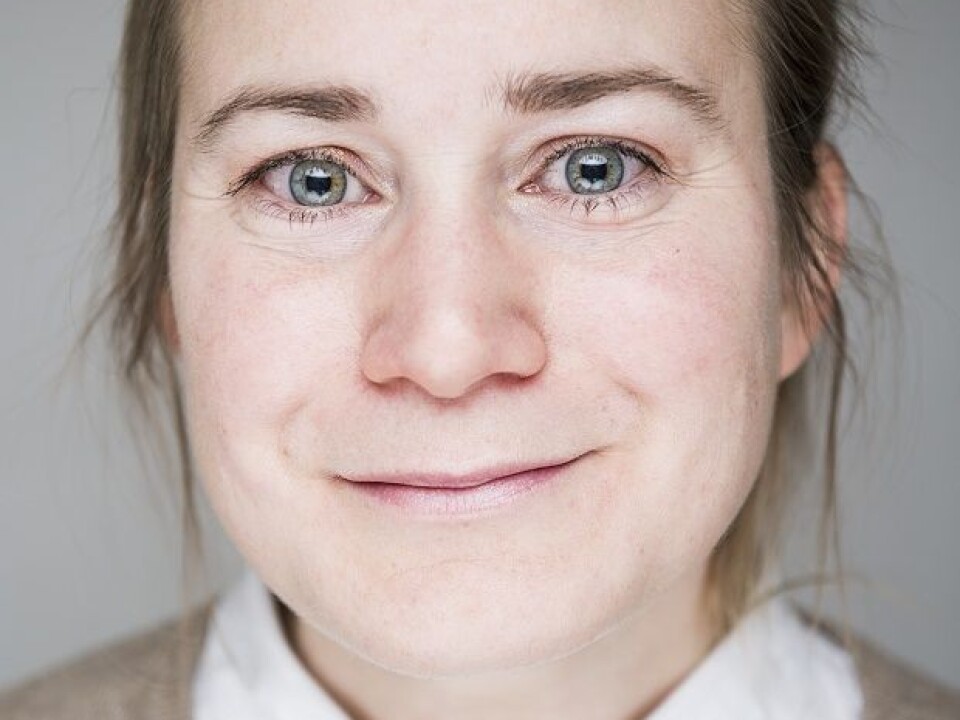
Job prospects rise with right contacts
A 19-year-old is less likely to find a job if their friends and contacts are largely unemployed, according to a Swedish study.
It’s no secret that knowing people in the working population is advantageous when you are looking for a job. They can tip you off about job openings that haven’t been advertised and put in a good word for you with a boss.
But it is hard to chart the contacts of job-seekers in a systematic way. Some Swedish researchers have made a great attempt at it.
In 2009 Statistics Sweden asked nearly 1,600 Swedish youth whether they knew anyone who held positions in any of 40 different lines of work.
These were 19-year-olds with three different ethnic backgrounds: Sweden, Iran and countries that comprised the former Yugoslavia.

These kids were on the threshold of their working careers but without much work experience or education to boast of.
This meant that knowing individuals in various lines of work would raise their chances of landing jobs, figured the researchers. It looks like they were right in this assumption.
The study confirms a clear connection between knowing many in job positions and the probability of finding employment.
Without such contacts the chance of being unemployed is much larger.
Many outsiders
Unemployment amongst young persons in Norway has risen the past year. In the first quarter of 2016, joblessness among persons aged 15-24 is at 11 percent, according to figures from Statistics Norway.
The number in Sweden is even higher, especially amongst those with an immigrant background. In February this year 19 percent of young people aged 15-24 in Sweden were out of work, according to Statistics Sweden.
What can help them find a job?
The Swedish researchers have checked against and made allowances for alternative disparities between the groups which commonly impact unemployment: Different amounts of education, grade averages, parents’ educational levels and family income, place of residence, personalities, health and previous job experience. But there could be other factors having an effect.
Especially for immigrants
The effect of having contacts is especially important for young persons with immigrant backgrounds from Iran, which is the group with the least lowest unemployment rate amongst the three. They tend to have a strong network in several job categories and probably gain from such social capital.
“This is a significant and solid study,” says Ida Drange, a researcher at the Work Research Institute of the Oslo and Akershus University College of the Applied Sciences (HiOA).
“It has managed to show how important networks are for getting hired, especially among immigrants.”
Drange does research on minorities in the work force but knows of no comparable studies from Norway.
She says that studies which directly measure people’s networks are few and far between. But a lack of contacts is one usual explanation when researchers try to understand why immigrants find it harder to enter the work force than other Norwegians.
Drange says that Norwegian researchers rarely chart who jobseekers know. They are more concerned with parents’ education levels and what kind of jobs they might have, which schools the young people have attended and what sort of neighbourhood they live in.
Not just the unemployed
Unemployment can be critical for the persons who haven’t found a way into the job market yet, write the Swedish researchers. This was also stressed by a director at the Norwegian Labour and Welfare Administration (NAV) earlier this year.
“If we cannot get the young people into jobs, many are at risk of staying outside the work force their entire lives. Those who fall out of school are especially in the danger zone,” said Yngvar Åsholt to the newspaper Dagbladet.
Registered unemployment does not always provide the full picture. The Swedish researchers have looked into whether the young persons are engaged in any kind of activities, in order to catch more than just those who are registered as out of work. With this in mind, a whopping 34 percent were jobless in 2009, when unemployment for the age group 15-24 was listed at 25 percent.
There can be many reasons why 19-year-olds are neither employed nor educating themselves.
“It could be that some take a year off, or there is a shortage of student capacity at schools and a waiting list to get in, and this makes for higher unemployment,” says Researcher Ida Drange.
Friends can have an effect
A network of people in jobs is not all that helps when a person seeks entry-level employment. Friends in general can have an impact.
The Swedish researchers show that previous studies indicate that having a circle of friends who are also jobless undermines a person’s drive to look for work. It is stronger when friends are employed.
Ida Drange at HiOA agrees that having many unemployed friends affects a young person’s feelings about being out of work.
“It could lower the threshold for what is acceptable. It can be easier to hang around home when you are not the only one,” says Drange.
“But this isn’t just a question of lazing about. The circle of friends might lack competence in looking for work.”
The young people in the study were asked to list the five friends they spent most of their time with.
And for some groups it turned out, not surprisingly, that the likelihood of being unemployed is more probable if you friends are in the same sorry situation.
This did not apply to all the young persons. It has a big impact for the group with roots in former Yugoslavia, which has the largest unemployment rate, but only slightly for those with ethnic Swedish backgrounds and not at all for the Iranians.
The study does not deal with the causes here. Perhaps unemployed young people select friends in their same situation rather than the circle of jobless persons having an influence on them. It’s a chicken or the egg situation and other combinations of factors might be in play too.
Iranians find jobs
The Swedish researchers have no clear answer why for some young people it’s a strong factor that friends are out of work and for others it is pretty insignificant.
Why would jobless friends amongst young people with Iranian backgrounds not raise the risk?
The researchers think it might be a matter of who a person knows outside their most intimate circle of five friends. Young people with roots in countries that formed Yugoslavia might be more likely to belong to milieus which cannot help them find work.
All the young people in the study had both immigrant friends and ethnic Swedish friends, so being completely isolated and limited to immigrants does not seem to be the problem. But a factor might be belonging to a circle of family and acquaintances – a social environment – lacking in various kinds of resources.
“It could link to the Iranian group being more resourceful than those with a former Yugoslavian background,” says Jens Rydgren, one of the researchers behind the study in a press release.
Different expectations?
The sociology professor at Stockholm University thinks the Iranian group is more efficient in mobilising their immediate and extended families in helping find a job. But he stresses that this has not been researched.
Attitudes about education and work can also differ among ethnic groups.
“Maybe there’s a difference in expectations of what the young people can achieve,” says Ida Drange.
She thinks this explanation sounds probable but there can be additional grounds for why the groups have different degrees of success in gaining employment.
Drange notes that the Swedish researchers have not determined the mechanisms that cause higher levels of unemployment among the groups of young people.
“If their friends’ unemployment generally had an impact on joblessness, we should see an effect for all three groups.”
-------------------------------------------------
Read the Norwegian version of this article at forskning.no
Translated by: Glenn Ostling









